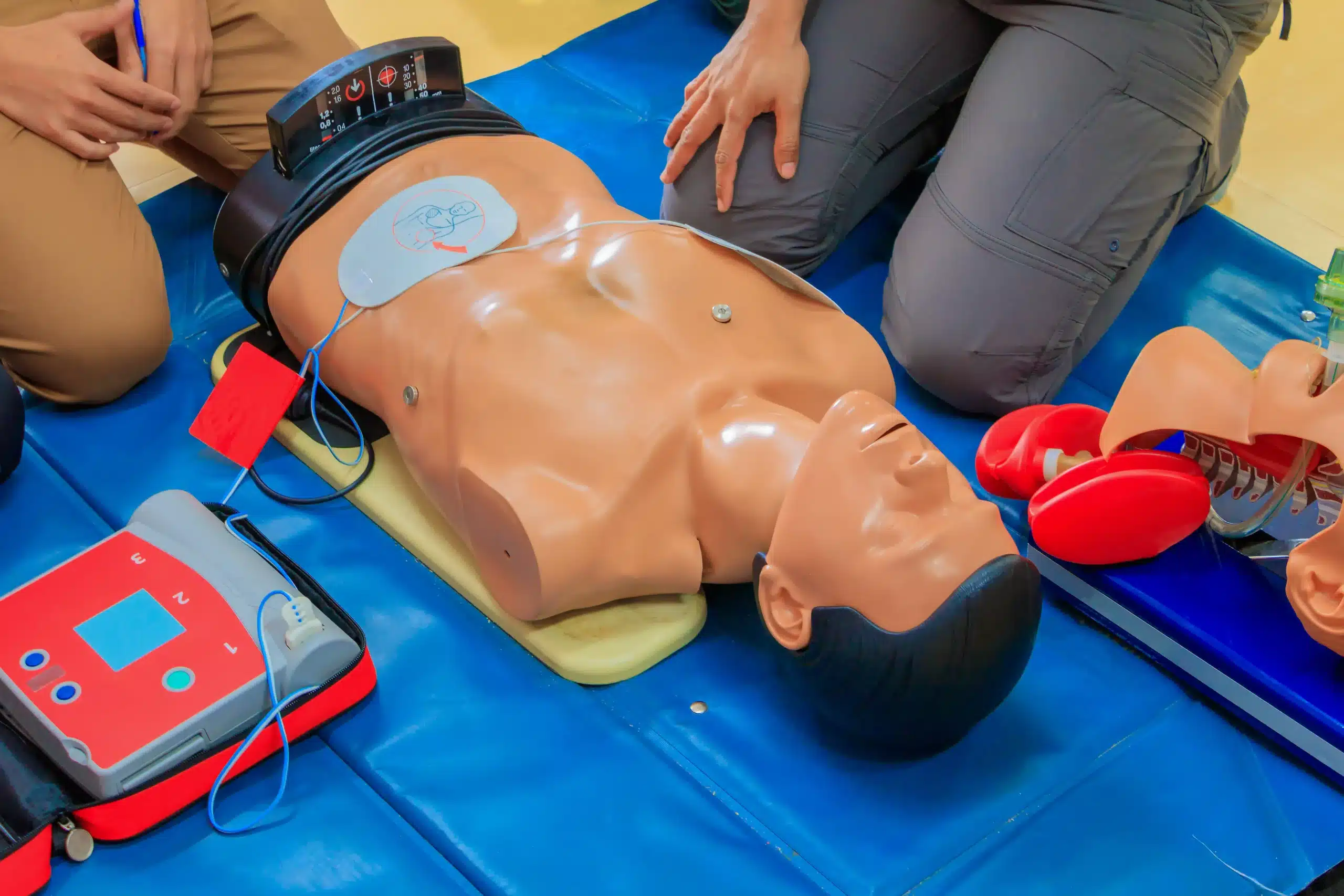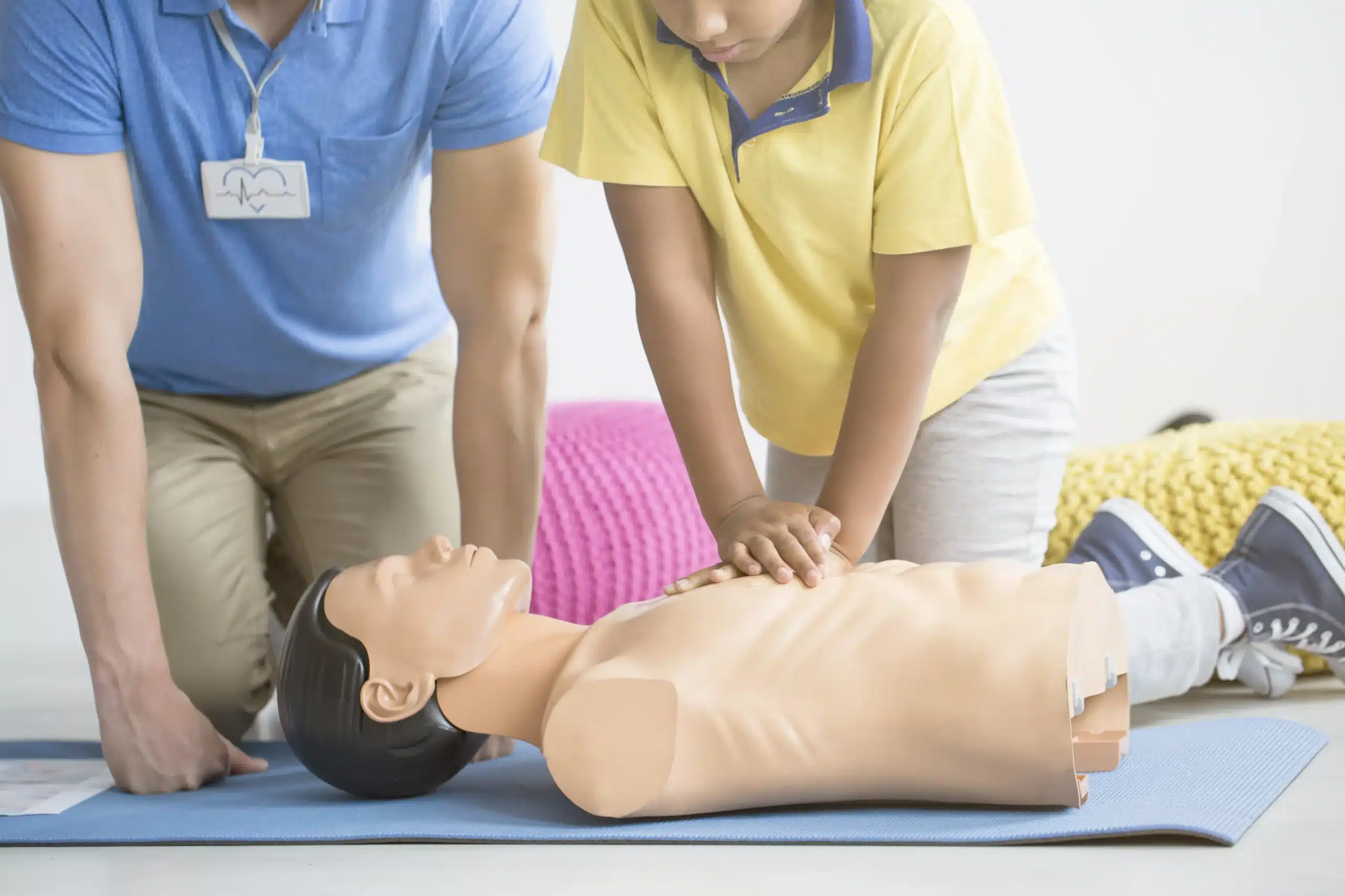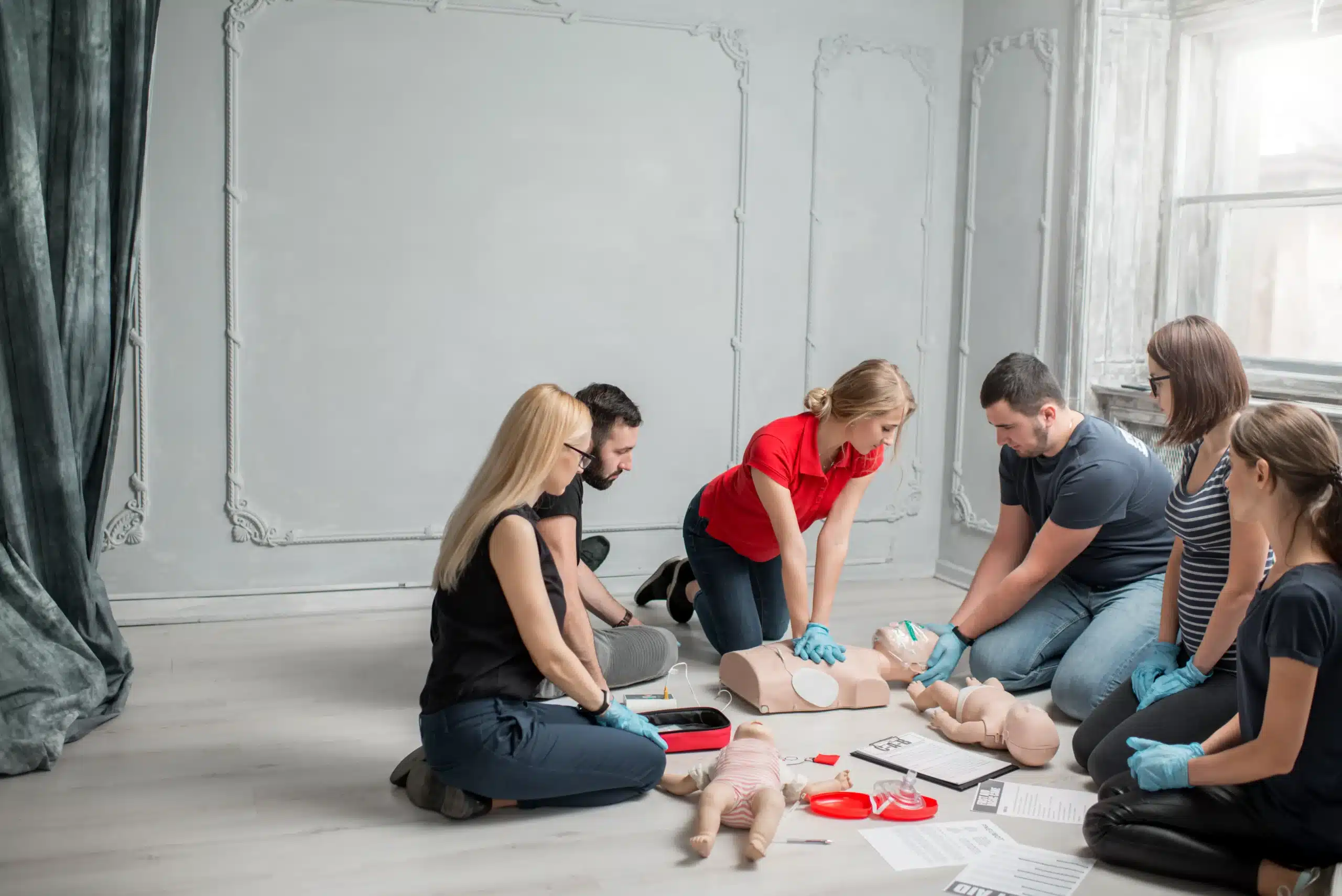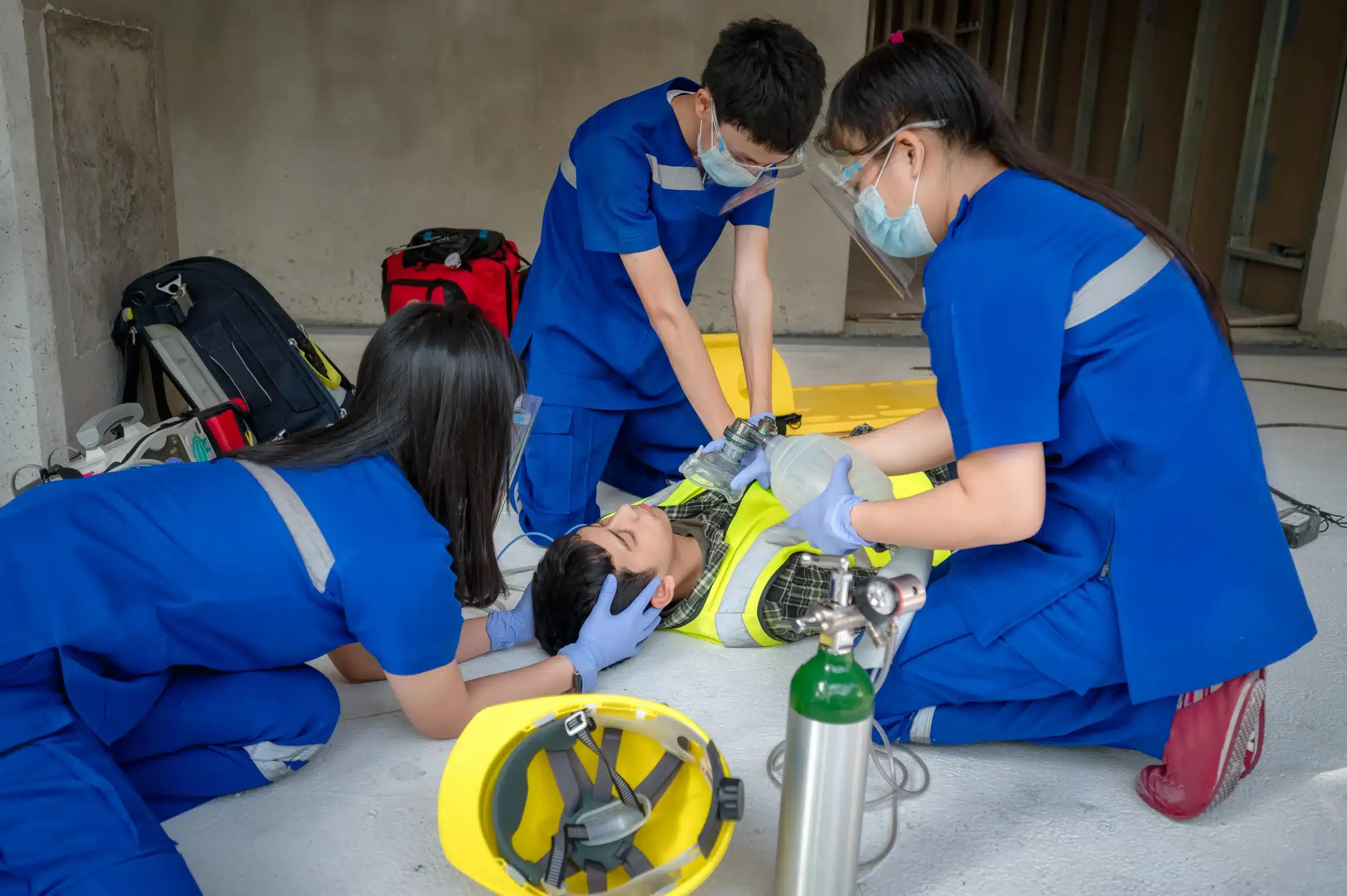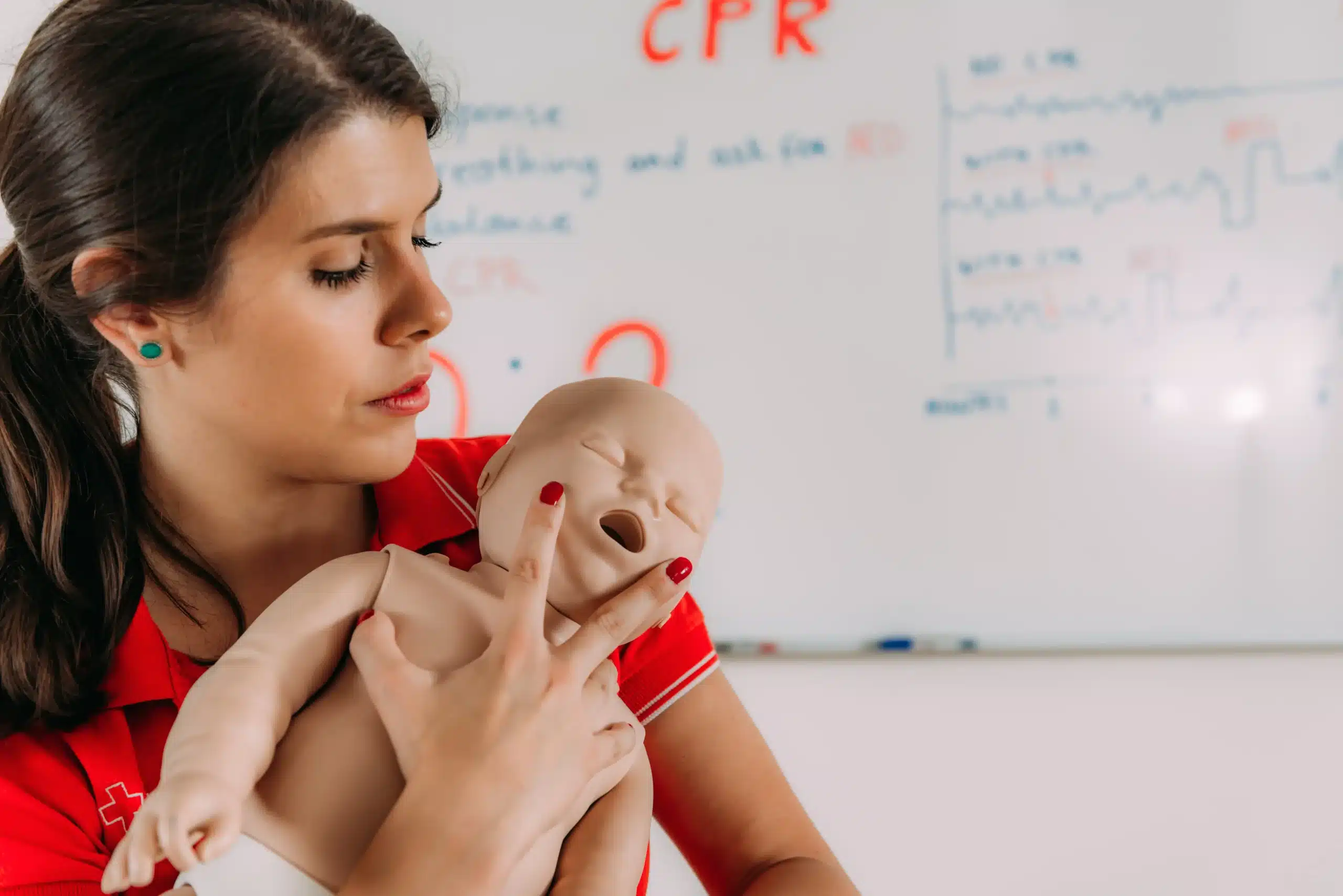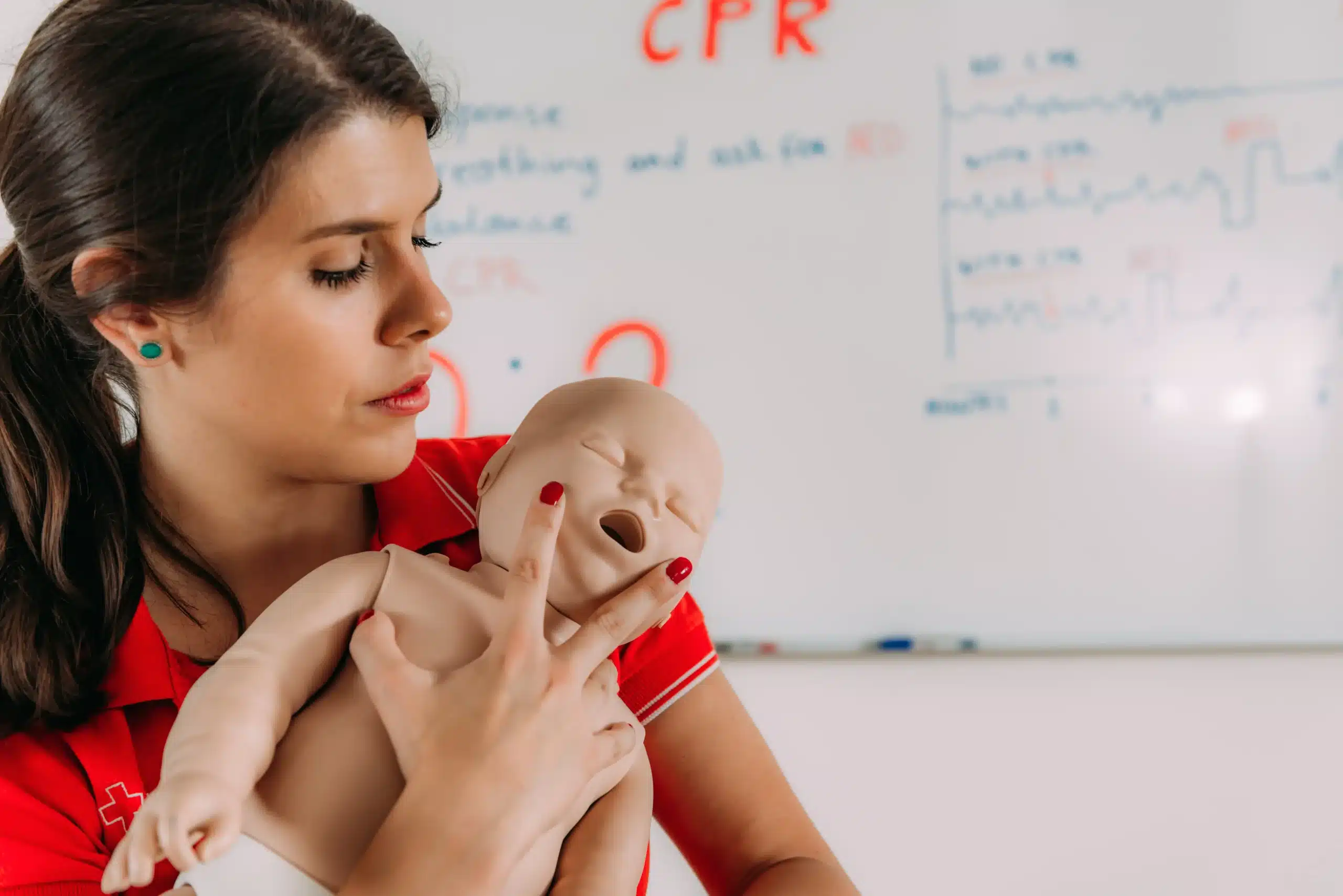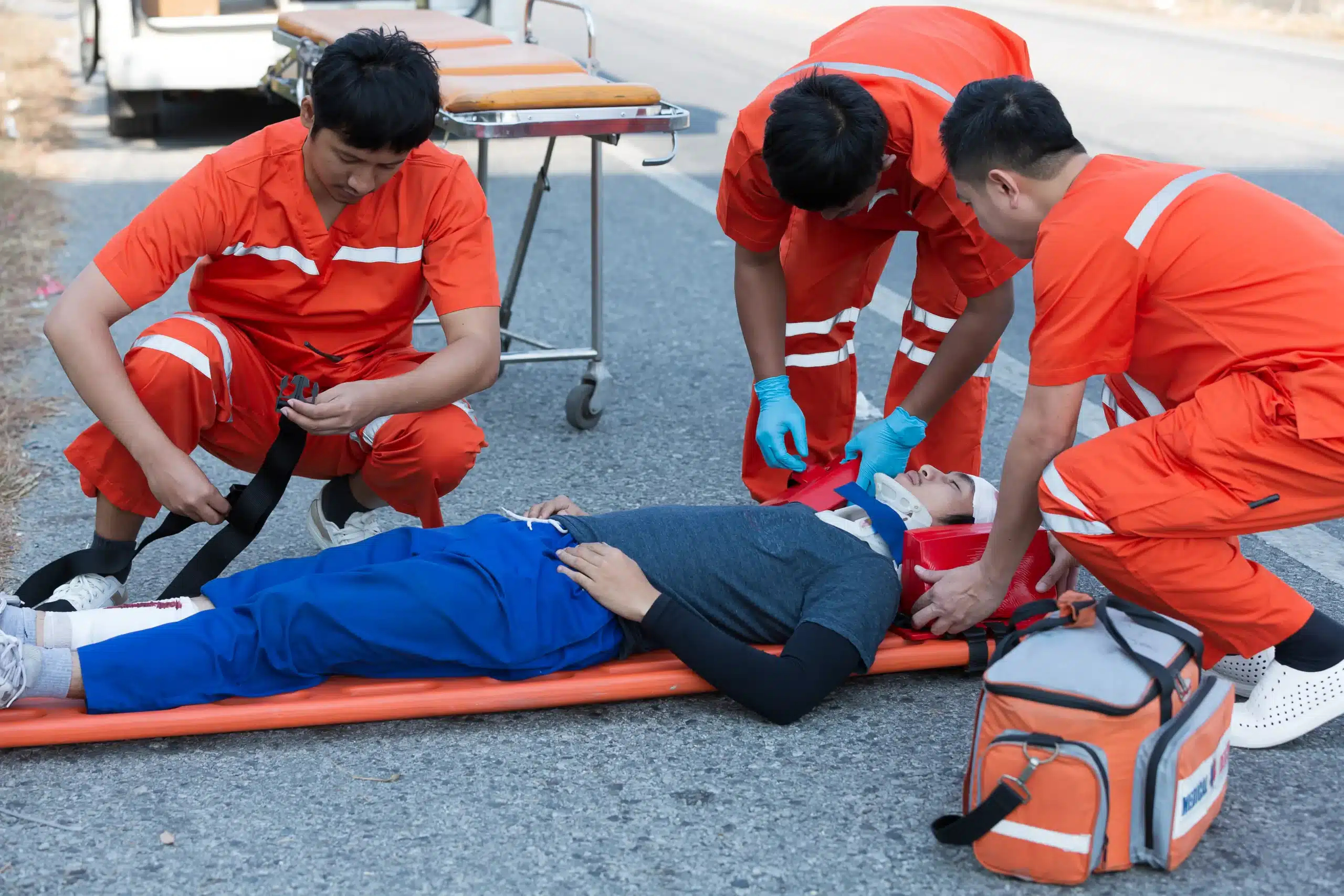Are you ready to make a difference in a medical emergency? Basic Life Support (BLS) certification gives you the confidence and competence to act quickly and effectively when every second counts. This comprehensive training covers essential life-saving techniques, including CPR, AED use, and airway management. It’s a valuable credential for healthcare professionals and anyone who wants to be prepared for critical situations. If you’re searching for “BLS certification near me,” this guide will help you understand the importance of BLS, the skills you’ll gain, and how to find the right training program to fit your schedule and learning style.
Key Takeaways
- BLS certification provides essential life-saving skills: The training covers a range of techniques, including CPR, AED use, and airway management, empowering you to respond effectively in various emergencies.
- Accessible and affordable training options are available: Explore in-person, online, and blended learning formats to find a course that fits your schedule and budget. Many providers offer flexible scheduling and competitive pricing.
- Stay current with BLS guidelines and renew your certification: Maintain your skills and knowledge by recertifying every two years, ensuring you’re always prepared to provide the most effective care.
What is BLS Certification?
Basic Life Support (BLS) certification equips you with the skills to respond to life-threatening emergencies. It’s more than just CPR—it’s a comprehensive approach to providing immediate care in various critical situations. From sudden cardiac arrest and choking to respiratory emergencies, BLS training gives you the confidence and competence to act quickly and effectively. This training is crucial for healthcare providers and anyone who wants to be prepared for such events. Many misconceptions exist about BLS certification, so let’s clear those up and explore what this training truly entails. For a deeper dive into debunking common myths, check out this helpful resource on BLS Certification.
Key Skills You’ll Learn
In a BLS certification course, you’ll master essential lifesaving techniques. High-quality CPR is a cornerstone, focusing on chest compressions and rescue breaths. You’ll also learn how to use an automated external defibrillator (AED), a portable device that can restore a normal heart rhythm. Airway management is another critical component, covering techniques to ensure a person can breathe effectively. Additionally, you’ll learn how to assist someone who is choking, a skill that can prevent a life-threatening situation from escalating. For more information on the skills covered in BLS training, take a look at this article.
Who Needs BLS Certification?
While BLS certification is often a requirement for healthcare professionals and first responders like paramedics, EMTs, and firefighters, it’s valuable for anyone. Teachers, coaches, lifeguards, and childcare providers often seek BLS certification to ensure they can respond effectively in emergencies. Even if you’re not in a profession that specifically requires it, having BLS training can empower you to assist family, friends, or even strangers in a time of need. It’s a skill that can make a profound difference in someone’s life. This article clarifies who can benefit from BLS training.
Find BLS Certification Courses Near You
Now that you understand the importance of BLS certification, let’s explore how to find a course that fits your schedule and learning style. Several avenues exist for locating BLS training, from online resources to local training centers and community institutions.
Online Course Locators
The internet offers convenient tools for finding BLS certification courses. The American Red Cross, for example, has a user-friendly website that allows you to search for classes by zip code and filter by course type. This makes it easy to identify available online and blended learning BLS courses near you. Other national organizations, such as the American Heart Association, often feature similar search tools on their sites, making it simple to compare options.
Local Training Centers
Many dedicated training centers specialize in providing BLS certification courses. These centers often offer more flexible scheduling, including weekend and evening classes, to accommodate busy professionals. Safety Training Seminars, for instance, offers daily BLS courses in over 60 cities. A quick Google search for “BLS training centers near me” can uncover convenient local options. Look for training centers that emphasize hands-on practice and provide feedback from certified instructors. Reading online reviews can also give you a sense of the quality of instruction and the overall learning experience.
Community Colleges and Universities
Community colleges and universities frequently offer BLS certification courses through their continuing education programs or allied health curricula. These courses often provide a more structured learning environment and may be a good fit for those who prefer a traditional classroom setting. Check the websites of community colleges and universities in your area or contact their continuing education departments for more information. You can also find helpful resources and a complete guide to BLS courses in Carmichael on the Carmichael CPR Classes blog.
Choose Your BLS Training Format: In-Person, Online, or Blended?
So, you’re ready to get your BLS certification—great! Now, you have another choice to make: deciding which training format works for you. With in-person, online, and blended learning options available, it’s important to weigh the pros and cons of each to make the best decision for your learning style and schedule.
Pros and Cons of Each Format
Let’s break down the advantages and disadvantages of each BLS training format:
In-Person Training:
-
Pros: In-person training provides that hands-on, real-time learning experience many of us thrive in. You’ll typically spend about 4.5 hours in the classroom, working through lectures and practicing your skills with instructors who can give you immediate feedback. This format is perfect if you value direct interaction and prefer having your skills assessed in real-time.
-
Cons: The biggest drawback to in-person training is the time commitment. You’ll need to factor in travel time to and from the training center, which can be a challenge if you have a packed schedule.
Online Training:
-
Pros: Online BLS training offers maximum flexibility. You can learn at your own pace, squeezing in modules whenever you have free time, and from wherever you have internet access. This is a game-changer for busy professionals or anyone juggling a lot of responsibilities. The American Red Cross offers this online option.
-
Cons: While online training is convenient, it typically lacks the hands-on component until you complete a separate in-person skills session. If you’re someone who learns best by doing, you might find this format less effective on its own.
Blended Learning:
-
Pros: Blended learning offers the best of both worlds. You’ll complete the coursework online at your own speed, then attend an in-person skills session to put your knowledge into practice. This format often includes perks like ongoing access to course materials, which can be a great refresher down the line.
-
Cons: Even though blended learning offers flexibility, it still requires a commitment to complete both the online and in-person components. Make sure you can dedicate the necessary time to both before choosing this option.
Select the Right Option for You
Choosing the right BLS training format really comes down to understanding your learning style and availability. Think about how you learn best, how much time you can realistically commit, and how important hands-on practice is for you. If you’re a healthcare provider or first responder, remember that this training is often essential for maintaining your skills and meeting licensing requirements. Take your time, consider your options, and choose the format that best sets you up for success.
How Much Does BLS Certification Cost?
Getting BLS certified is an investment in your skills and ability to respond to emergencies. But how much does it actually cost? Let’s break down the price range and the factors that influence it.
Average Price Range
BLS certification typically costs somewhere between $30 and $150. You’ll find many reputable providers offering BLS training for around $75, often including all your course materials. Remember, this is just an average; the actual price depends on a few things.
Factors Affecting Cost
Several factors can impact the final cost of your BLS certification. The training provider you choose plays a big role, as different organizations have different pricing structures. For example, the American Heart Association (AHA) may have different fees than other accredited providers. The course format also matters. Online courses are sometimes more affordable than in-person classes, which often have added costs for materials and facility use. Finally, location can influence pricing. BLS certification in urban areas might be slightly more expensive due to higher operating costs and demand.
Discounts and Financial Aid
Looking to save money? Many training providers offer discounts for groups, so if you’re signing up with colleagues or friends, be sure to ask. Some providers also offer financial aid or scholarships, making BLS certification more accessible. If you’re a student or facing financial constraints, check with your chosen provider about potential financial assistance. It’s always worth inquiring directly—you might be surprised at the options available. Carmichael CPR Classes offers a low price guarantee.
What to Expect During Your BLS Certification
So, you’ve signed up for your BLS certification class—congratulations! Here’s what you can expect during your training. Knowing what’s ahead will help you feel prepared and confident.
Course Duration and Components
A typical BLS certification course takes about 4.5 hours for in-person training. Carmichael CPR Classes offers several course formats, including traditional classroom learning and a blended Simulation Learning experience that combines online coursework with in-person skills sessions. This blended learning option gives you the flexibility to learn the material at your own pace online, then demonstrate your skills in person.
Exam Requirements
After you complete the BLS training, you’ll take an exam to receive your certification. BLS certifications are valid for two years. To maintain your certification, you’ll take a renewal course before it expires. This ensures you’re always up-to-date on the latest life-saving techniques and guidelines. Carmichael CPR Classes offers an AHA BLS course designed to meet these requirements.
Hands-On Skills Assessment
The hands-on skills assessment is a crucial part of BLS certification. If you choose the blended learning program, you’ll complete the online portion first, then attend an in-person skills session. During this session, you’ll demonstrate the BLS techniques you’ve learned, giving you the confidence to handle real-life emergencies. You’ll need internet access and a device like a computer, tablet, or smartphone to complete the online portion. Our low price guarantee ensures you’re getting the best value for this comprehensive training.
Top BLS Certification Providers
Finding the right BLS certification provider is key to receiving quality training and a recognized credential. Here’s a rundown of some leading organizations and what they offer:
American Heart Association (AHA)
The AHA is a trusted authority on CPR and emergency cardiovascular care. Their Resuscitation Quality Improvement (RQI) program offers a flexible, convenient way to earn your BLS certification. RQI uses a blended learning approach with online modules and in-person skills sessions. This allows healthcare professionals to learn at their own pace and refresh their skills regularly. The AHA is widely recognized, making their BLS certification a valuable asset.
American Red Cross
The American Red Cross also provides comprehensive BLS certification courses. They offer various learning formats, including in-person classes and blended learning options. Red Cross BLS certification is accepted nationwide and meets many workplace requirements. Their courses equip people with the knowledge and skills to respond confidently in medical emergencies.
National CPR Foundation
The National CPR Foundation offers online medical certification courses, including BLS. This online format allows for flexible learning, fitting into busy schedules. While online courses offer convenience, it’s important to ensure the program includes a hands-on skills assessment component, crucial for effective BLS practice.
ProTrainings
ProTrainings provides a range of BLS training options, with a focus on flexibility and affordability. They offer online courses, in-person training, and blended learning formats. ProTrainings caters to various industries and individuals seeking BLS certification.
Carmichael CPR Classes
For those in the Carmichael, CA area, Carmichael CPR Classes, offered by Safety Training Seminars, is a top choice. They are a woman-owned AHA Training Center providing high-quality BLS, ACLS, PALS, CPR, and First-aid courses. Their commitment to excellent customer service, daily classes, and a low price guarantee makes them a standout option for local residents. They serve Carmichael, Rancho Cordova, and Fair Oaks.
Maintain Your BLS Certification
Once you’ve earned your BLS certification, staying current is key. Knowing the renewal process and how to keep up with the latest guidelines will ensure you’re always prepared to provide effective care. Here’s what you need to know:
Renewal Timeline
BLS certifications are typically valid for two years. It’s essential to keep track of your certification’s expiration date to avoid a lapse in your credentials. Mark your calendar or set a reminder to begin the recertification process a few months before your current certification expires. This provides ample time to find a course and complete all the requirements. Resources like the Red Cross offer more information on BLS renewal.
Recertification Process
The recertification process involves taking a BLS renewal course. These courses cover any updates to the BLS guidelines since your last certification, ensuring your skills and knowledge are current. The renewal course refreshes core skills and covers new developments in emergency care. After successfully completing the course and passing any required assessments, you’ll receive your updated BLS certification. ProTrainings offers insights into guideline updates and the importance of staying current.
Stay Current with Guidelines
Staying informed about the latest BLS guidelines is crucial for providing the best possible care. Organizations like ILCOR regularly review and update these guidelines, often every five years, to reflect the most effective practices. By actively seeking information on guideline changes and participating in continuing education, you maintain a high standard of care. Resources like Smart Sim Registration discuss these updates and address common misconceptions surrounding BLS. Staying current demonstrates your commitment to providing effective and safe BLS techniques.
Prepare for Your BLS Certification Course
Getting ready for your BLS certification course can make a real difference in how well you absorb the information and perform on the exam. A little prep work goes a long way! This section covers the study materials, any pre-course requirements, and some helpful tips to set you up for success.
Study Materials and Resources
Most BLS courses follow American Heart Association (AHA) guidelines, so using AHA-compliant resources is a smart move. You can often find study guides, videos, and practice tests online or through your chosen training provider. Many providers offer resources to help you prepare for your BLS course. Look for materials that combine lectures with hands-on practice scenarios to reinforce what you’re learning. Some organizations also offer interactive tools like games and quizzes to help you retain the information after you’ve completed your certification.
Pre-Course Requirements
Generally, there aren’t strict pre-requisites for taking a BLS certification course. It’s designed to be accessible to a wide range of people, from healthcare professionals to concerned citizens. However, it’s important to understand that BLS certifications are typically valid for two years. This means you’ll need to take a renewal course to maintain your certification. If your current certification is nearing its expiration date, factor that into your planning and sign up for a refresher course in advance.
Tips for Success
A few simple strategies can maximize your learning experience. First, find a course that fits your schedule and learning style. Carmichael CPR Classes, for example, offers daily classes, giving you plenty of flexibility. Second, take advantage of any free or discounted training materials offered by your provider. This can help you save money and get a head start on your studies. Finally, remember that BLS teaches you how to respond effectively and safely in medical emergencies. Come prepared to actively participate, ask questions, and practice the skills you’ll be learning.
Career Opportunities and Benefits of BLS Certification
BLS certification is essential for healthcare professionals and significantly enhances career opportunities. It equips individuals with critical life-saving skills, making them invaluable in emergency situations. As American Health Training notes, “BLS certification is a crucial credential for healthcare professionals.” This certification not only prepares you to respond effectively but also opens doors to various healthcare roles. Earning your BLS certification demonstrates a commitment to patient safety and high-quality care, boosting your professional credibility.
Related Certifications
In addition to BLS, consider related certifications to further enhance your qualifications. BLS training often includes AED use, basic airway management, and techniques for assisting someone who is choking. These skills are vital in many emergencies. Obtaining additional certifications like Advanced Cardiovascular Life Support (ACLS) or Pediatric Advanced Life Support (PALS) can further bolster your expertise and employability. These advanced certifications build upon the foundation of BLS, allowing you to manage more complex respiratory and cardiovascular emergencies. For those working with infants and children, the Neonatal Resuscitation Program (NRP) certification is another valuable addition to your skillset.
Continuing Education
Continuing education is critical for maintaining your BLS certification and staying sharp. It’s a common misconception that BLS certification is a one-time requirement. Regularly updating your BLS knowledge and skills through recertification courses ensures you remain competent and confident in handling emergencies. Staying current with the latest guidelines and best practices is essential for providing the highest standard of care. Plus, demonstrating a commitment to ongoing learning shows employers you’re dedicated to professional development.
Career Paths BLS Skills Enhance
BLS certification equips you with life-saving skills applicable to various healthcare careers. You’ll learn CPR, AED use, airway management, and team communication to confidently handle medical emergencies. These competencies are crucial for roles such as paramedics, nurses, and emergency medical technicians, making BLS certification a valuable asset. Whether you’re a medical student, healthcare provider, or childcare professional, BLS strengthens your resume and prepares you for real-world scenarios. Even in non-medical fields like education, fitness, or social work, having BLS certification can be a significant advantage, demonstrating your preparedness to handle unexpected health crises.
Common BLS Certification Misconceptions
When it comes to Basic Life Support (BLS) certification, a few misconceptions can make people hesitate to pursue this important training. Clearing up these myths is key for anyone thinking about getting certified.
Myth #1: BLS Certification is Only for Healthcare Professionals. Many assume that only doctors and nurses need BLS certification. The truth is, BLS training benefits anyone who might find themselves responding to a medical emergency, like teachers, coaches, and caregivers. These skills empower people to act quickly and confidently in critical situations. For more information on who can benefit from BLS training, check out this helpful article on debunking BLS myths.
Myth #2: BLS Certification is Expensive. Cost is a common concern, but many people overestimate how much BLS certification actually costs. It’s an investment in life-saving skills, and it’s often more affordable than you might think. The information provided here clarifies the cost concerns. Carmichael CPR Classes also offers a low-price guarantee.
Myth #3: BLS Certification is a One-Time Thing. Some believe that once you’re certified, you’re set for life. Actually, BLS certification needs to be renewed every two years. This ensures you’re always up-to-date on the latest techniques and guidelines.
Myth #4: BLS Training Takes Too Much Time. Busy schedules can make extra training seem impossible. However, BLS training programs are designed to be efficient. You can often become certified in just a few hours, making it manageable even for busy professionals. Carmichael CPR Classes offers a variety of course schedules to fit your needs. Check out our CPR and first-aid certification courses to find one that works for you.
Myth #5: BLS Certification Only Covers CPR. While CPR is a core component, BLS training covers a broader range of skills. You’ll also learn how to use an automated external defibrillator (AED), basic airway management techniques, and how to help someone who is choking. Learn more about the comprehensive nature of BLS training. At Carmichael CPR Classes, we cover all these essential skills in our BLS certification courses.
Related Articles
- Find BLS Classes Near Me: Your Complete Guide – Carmichael CPR Classes
- BLS Recertification Near Me: Your Complete Guide – Carmichael CPR Classes
- BLS HeartCode Carmichael: Your Certification Guide – Carmichael CPR Classes
- BLS Renewal in Carmichael: Find the Right Course for You – Carmichael CPR Classes
- Debunking Common CPR Myths for Lifesaving Confidence
Frequently Asked Questions
Is BLS certification difficult to obtain? The BLS course is designed to be straightforward and accessible to people of all backgrounds, even those with no prior medical experience. The curriculum focuses on practical skills and emphasizes hands-on learning, making it easier to grasp the concepts and techniques. While a basic understanding of medical terminology can be helpful, it’s not required to successfully complete the course and obtain certification.
What’s the difference between BLS and CPR certification? CPR is a specific skill within BLS. BLS encompasses a wider range of lifesaving techniques, including CPR, AED use, and basic airway management. Think of BLS as a more comprehensive approach to emergency care, with CPR as one of its essential components.
How long does a BLS certification last, and how do I renew it? BLS certification is valid for two years. To renew, you’ll need to take a recertification course before your current certification expires. This refresher course covers any updates to guidelines and reinforces essential skills.
What if I have a busy schedule? Are there flexible course options? Absolutely! BLS courses are offered in various formats to accommodate busy schedules. You can choose from traditional in-person classes, online learning, or blended learning, which combines online coursework with in-person skills sessions. Many training centers also offer weekend and evening classes.
Why should I get BLS certified if I’m not a healthcare professional? BLS certification is valuable for anyone who wants to be prepared for a medical emergency. Whether you’re a teacher, coach, parent, or simply someone who wants to help, having these skills can make a real difference in a critical situation. You never know when you might need to use them, and being prepared can save a life.


